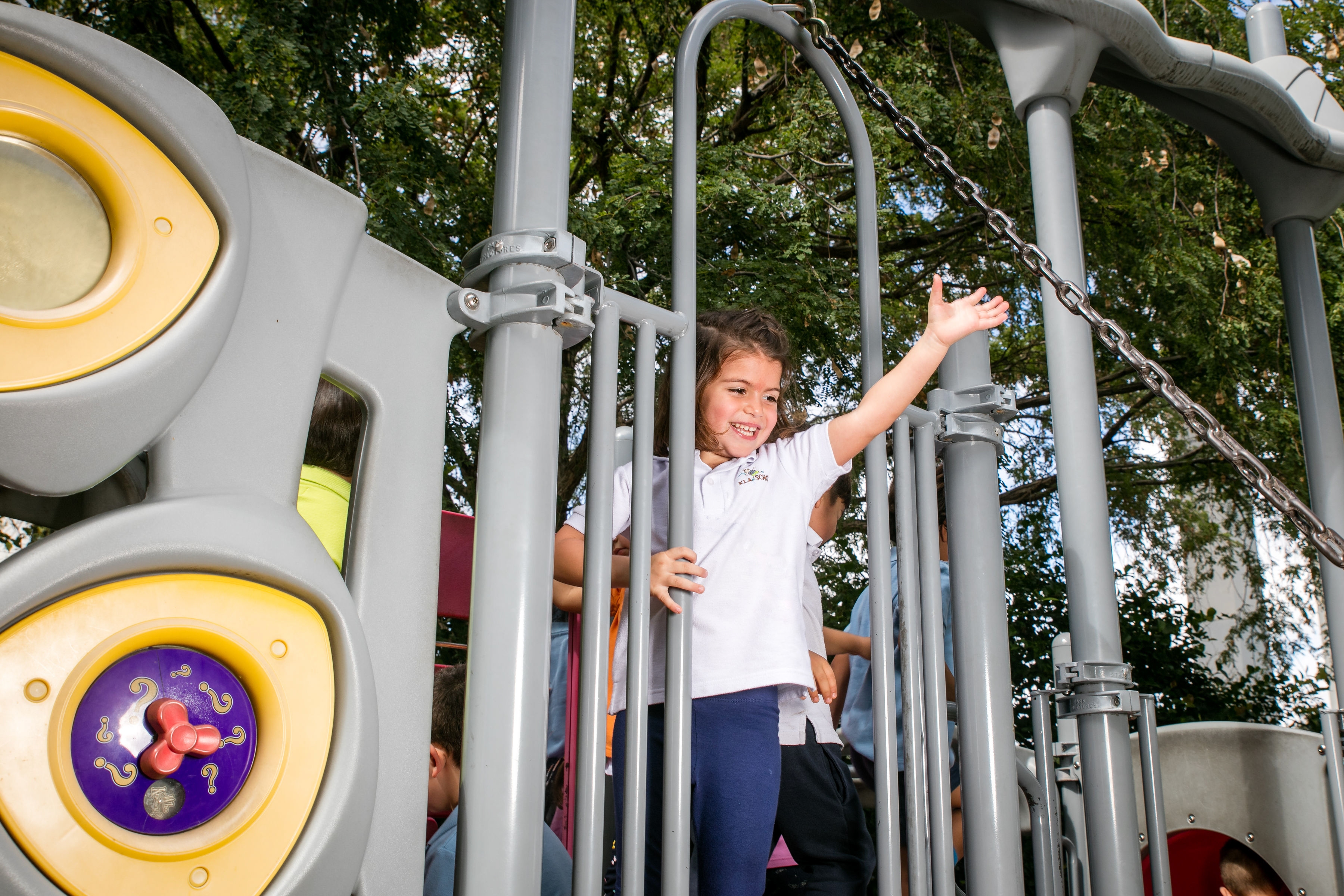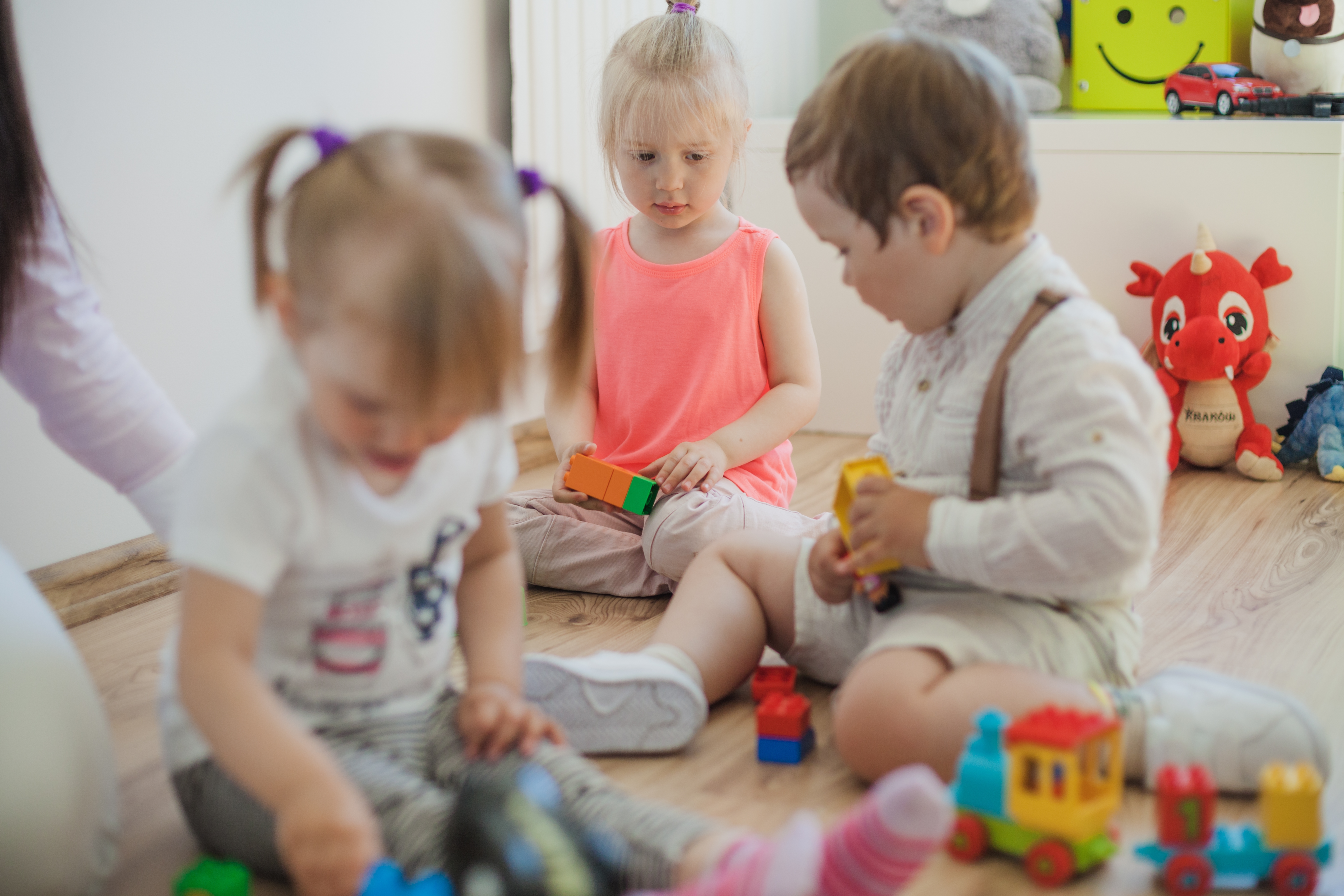Daycare And Separation Anxiety: Tips For Parents During The Initial Weeks
Topics: School Life
Age Range: Preschool
Starting daycare is a significant milestone for children and parents, but it often comes with mixed emotions. While many children adjust smoothly, others struggle with daycare and separation anxiety, making drop-offs difficult. Separation anxiety is a natural part of child development, but knowing how to manage it can make the transition easier for everyone.
Dealing with separation anxiety in school or daycare can be stressful for parents. Tears, clinging, and reluctance to say goodbye are common behaviors in the first few weeks. These reactions signify a child’s strong attachment, but with the right strategies, children can learn to feel secure and confident in their new environment.
Understanding separation anxiety helps parents prepare for the emotional ups and downs of starting care outside the home. Developing a plan, communicating with teachers, and offering consistent support at home can ease the transition. This guide provides practical strategies to help families navigate the first weeks of daycare separation anxiety and prepare children for a positive experience.
Understanding Separation Anxiety in Young Children
Separation anxiety typically begins around six months of age and can peak between 12 and 24 months. It occurs when children develop strong attachments to their caregivers and struggle with temporary separations. While separation anxiety is common in toddlers, it can also affect older preschoolers starting a new routine.
Signs of Separation Anxiety
Some children experience mild discomfort at drop-off, while others react more intensely. Common signs include:
- Crying or throwing tantrums when saying goodbye
- Clinging to parents or caregivers
- Refusing to enter the daycare facility
- Changes in sleep patterns
- Increased irritability or clinginess at home
Parents of a 2-year-old with separation anxiety in daycare may find that their child’s distress lasts longer or seems more intense. Each child adjusts independently, but having a plan can ease the process.
How to Prepare Before the First Day of Daycare
Transitioning to daycare begins well before the first day. Help your child adjust by introducing a consistent routine, discussing what to expect, and visiting the daycare together. Reading books about daycare, practicing short separations, and allowing them to bring a comfort item can ease anxiety. Label belongings, pack essentials in advance, and ensure your child gets plenty of rest. A positive, reassuring attitude will help them feel secure and ready for the change.
Talk About Daycare Positively
Discuss daycare as an exciting place to learn and play. Positive language helps children associate it with fun and new experiences rather than fear.
Visit the Daycare Together
Schedule a visit before the official start date. Walking through the classroom, meeting teachers, and seeing the play areas help children feel more comfortable.
Read Books About Saying Goodbye
Storybooks about starting daycare help children understand that it’s normal to feel nervous but that parents always return.
Practice Short Separations
Leaving children with a trusted friend or family member for short periods prepares them for longer separations and builds their confidence.
Create a Goodbye Routine
A consistent goodbye routine—such as a hug, special handshake, or saying, “I’ll be back after snack time”—helps children feel secure and know what to expect.
Managing Drop-Offs: Tips for a Smooth Transition
The first few drop-offs can be tricky, but a confident approach reassures children that daycare is safe and welcoming. Keep goodbyes short and positive, establish a consistent routine, and stay calm to help ease their anxiety. A quick hug, a reassuring smile, and a reminder of when you’ll return can provide comfort. Trust the caregivers and avoid lingering, as it can make separation harder. Over time, your child will adjust and feel more secure.
Keep Goodbyes Short and Sweet
Lingering can increase anxiety. A brief, cheerful farewell with a reassuring smile makes it easier for children to transition to their new environment.
Stay Calm and Confident
Children pick up on their parents’ emotions. If a parent seems anxious, the child may feel more uncertain. Projecting confidence helps children feel safe.
Allow a Comfort Item
A favorite stuffed animal, blanket, or small family photo can provide reassurance during the first few weeks of daycare separation anxiety.
Encourage Interaction With Teachers
Building a bond with caregivers makes children feel more secure. Encouraging your child to say hello and engage with their teacher helps establish trust.
Acknowledge Their Feelings
Validating emotions helps children process their anxiety. “I know it’s hard to say goodbye, but I’ll be back soon, and you’ll have fun playing with your friends,” reassures them.
What to Expect in the First Few Weeks
The adjustment period varies for each child. Some adapt quickly, while others may take time to feel comfortable. Expect a mix of emotions, from excitement to hesitation. Clinginess, anxiety, or behavioral regressions are common. Consistency, reassurance, and open communication help ease the transition. With support, most children gradually adjust and gain confidence.
Gradual Improvement
While the first few days might involve tears, most children start adjusting within a couple of weeks. Seeing familiar faces, following a routine, and engaging in play help ease the transition.
Behavior Changes at Home
Some children may seem more clingy or emotional after daycare, and others may have meltdowns due to the exhaustion of adjusting to a new routine. Extra patience and reassurance at home help them feel secure.
Communication From Teachers
Teachers provide updates on how a child is adjusting. If concerns arise, working together to develop additional strategies can be beneficial.
How to Help a Child With Separation Anxiety at School and Daycare
Some children experience more intense separation anxiety in school and daycare that persists beyond the first few weeks. While this can be challenging, providing emotional support and reinforcing consistency helps ease their fears.
Stick to the Routine
A predictable schedule helps children feel secure. Consistent morning and evening routines reduce stress and build confidence. Parents should establish a structured wake-up routine, a calm drop-off process, and a reassuring pick-up routine to help children feel safe in their daily transitions.
Celebrate Small Wins
Recognizing progress, even small steps like walking into daycare without tears, encourages children to keep trying. Praising efforts rather than results builds confidence and helps children associate daycare with positive experiences. If a child manages to wave goodbye or engage with a teacher, these small moments should be acknowledged as signs of progress.
Avoid Sneaking Away
While it might seem easier to leave when a child is distracted, sneaking away can increase anxiety and make future separations harder. Always say a proper goodbye, even if it leads to tears. A consistent farewell reassures children that parents will always return, helping to build trust and predictability.
Offer Extra Comfort at Home
Spending quality time together before and after daycare reassures children of their parents’ presence and love. Creating special bonding activities, such as reading a book together before bed or having a designated “mommy and me” or “daddy and me” time, provides emotional security that helps children adjust to separations more easily.
Seek Professional Support if Needed
If daycare separation anxiety lasts for several weeks without noticeable improvement, consulting a pediatrician or child psychologist can provide additional strategies. Some children may need more structured support to manage their emotions effectively, and professionals can guide parents on easing transitions while fostering independence.
Creating a Positive Daycare Experience
While separation anxiety is a natural part of child development, children eventually learn to feel safe and happy in their daycare environment. They gain the confidence to navigate new experiences independently with patience, consistency, and reassurance.
KLA Schools and Their Approach to Supporting Children
KLA Schools offer a nurturing and child-centered approach to early education, providing an environment where children feel safe, supported, and encouraged. Inspired by the Reggio Emilia approach, their philosophy emphasizes emotional security, hands-on learning, and strong relationships between teachers and children.
Understanding that daycare and separation anxiety can be challenging, KLA Schools implement strategies that ease transitions. Teachers establish strong bonds with children, making them feel secure and valued from the very beginning. Classrooms are designed to be inviting spaces that promote engagement and comfort.
KLA Schools provide personalized support for parents wondering how to help a child with separation anxiety at school. They encourage open communication between parents and teachers, ensuring every child’s unique needs are met. Their focus on emotional development helps children build confidence, resilience, and independence, making daycare a positive and enriching experience.
Through a structured yet flexible approach, KLA Schools help children navigate separation anxiety while fostering a love for learning. Their programs create a strong emotional and social development foundation, ensuring children feel safe, supported, and excited about their educational journey.

